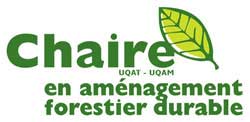Abstract Introduction Mining activities can lead to the formation of degraded, barren, or metal-contaminated ecosystems. Resource-poor ecosystems such as rocky outcrops are more sensitive to mining degradation, and their natural regeneration can be challenging due to soil erosion, lack of resources or seeds, and soil acidification. Objectives Our aim was to test the effectiveness of using locally collected bryophyte (Ceratodon purpureus [Hedw.] Brid.) mats as a restoration treatment to protect and promote the establishment of tree seedlings in mining-polluted rocky outcrops in Rouyn-Noranda (Canada). Methods The bryophyte restoration treatment inspired by natural succession processes was compared to a control, where only local soil was used as substrate, and to a liming treatment that increases soil pH. The three treatments were applied to sixty 1???1?m?units located on five outcrops at various distances (1.9?26.9?km) from the pollution source. Four tested tree species were each seeded at a density of 100?seeds/m2 on all units. Results The bryophyte treatment had a positive effect on the establishment success of Jack pine seedlings (Pinus banksiana Lamb.) with an establishment rate of 12% compared to 5 and 4% for liming and control treatments, respectively. Wind exposure had a significant negative effect on seedling establishment, potentially masking any negative effects of soil heavy metal concentration, which were not statistically significant. Conclusions Our strategy using bryophytes and mimicking natural succession has the potential to effectively regenerate trees in degraded rocky outcrops.

